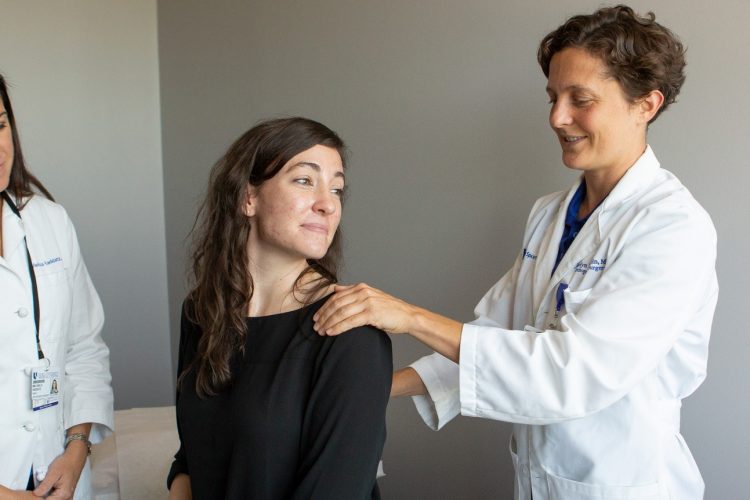The Problem
Shoulder pain is a prevalent cause of disability in the adult population, with rotator cuff tendon tears increasing in frequency each decade after the age of 40, and affecting approximately 25% of adults over the age of 50 (1-2). Despite the prevalence of shoulder pain in the adult population, there is a lack of access to subspecialized orthopaedic care in rural settings as compared to urban settings, and telehealth has been proposed as a solution to this problem (3-7). The popularity of telehealth is growing, and was identified as a critical issue by the American Orthopaedic Association in 2017 (8). Telehealth visits have been shown to provide a high level of patient satisfaction, and have been shown to be preferable when travel exceeds 30 kms (9, 10). Telehealth evaluations have also been shown to be cost effective and provide access to specialized care in other areas of orthopaedics. (11-17).
The goal of this project is to establish non-inferiority of a telehealth shoulder examination as compared to a standard clinical examination. A secondary aim of the study is to assess the validity of the individualized tests in a telemedicine-based examination.If non-inferiority is demonstrated, shoulder telehealth pre-operative evaluations, and possibly post-operative, will be a viable option. This will contribute to the quality of care provided in the broader community and increase the geographic footprint of the healthcare network. The use of telehealth technology will support population health improvement and management and provide a new avenue to educate and engage patients through digital technology. Doing this now will establish Duke as a leader in orthopaedics in what will no doubt become an increasingly competitive landscape.
Our Solution
Simulated telehealth evaluation of shoulder pain using patient self-examination will be compared to traditional clinical examination of shoulder pain using MRI as the gold standard (18) to determine accuracy in detecting rotator cuff tears.
Consecutive patients, 40 years of age or older, presenting with shoulder pain, and seen in the Duke Sports Medicine clinic by Dr. Wittstein or Dr. Lassiter will be invited to enroll and participate in the study during their visit. Consented subjects using a tablet will undergo a standardized shoulder self-examination under the guidance of an orthopaedic sports medicine fellow interacting with the subject through a telemedicine viewer. The results of the examination will be recorded in terms of positive or negative tests. During the same encounter, a standard clinical examination will be performed by the attending orthopaedic surgeon. The order of the standard exam and simulated telehealth exam will be randomized. Standard clinical x-rays will be reviewed and a diagnosis will be made. All subjects will undergo a standardized, clinical MRI of the affected shoulder to assess for presence or absence of a rotator cuff tear. The consistency necessary for the “gold standard” comparison requires the use of the research scanner to obtain these images.
Impact
Winner, best paper, J. Leonard Golder Research Day 2020



